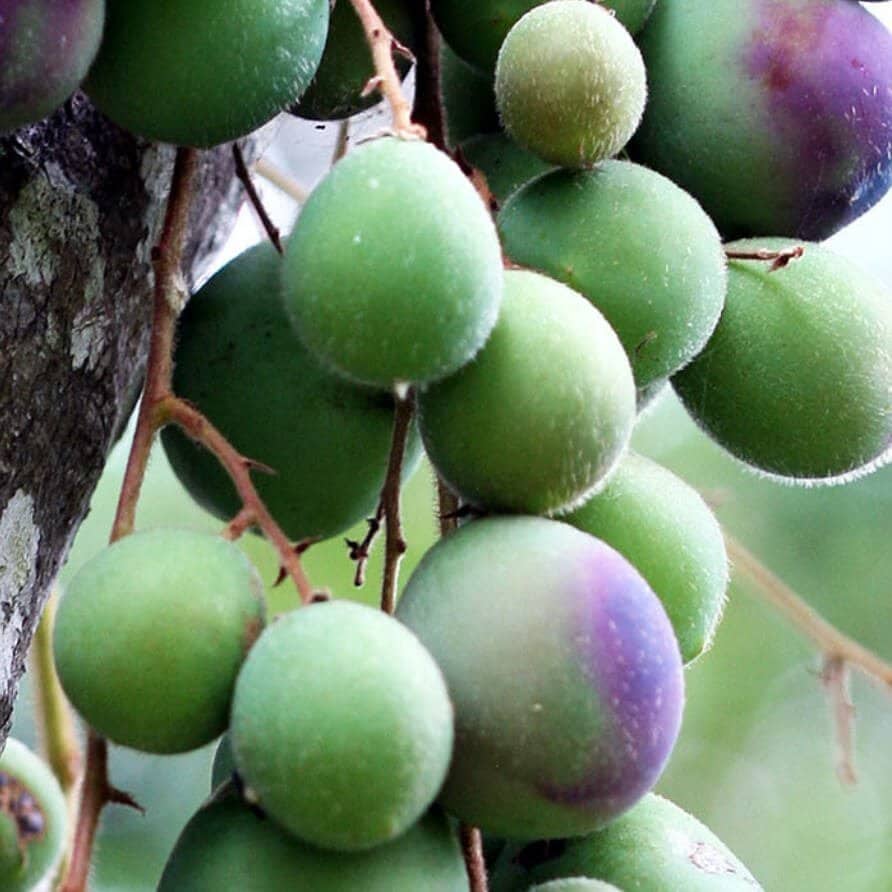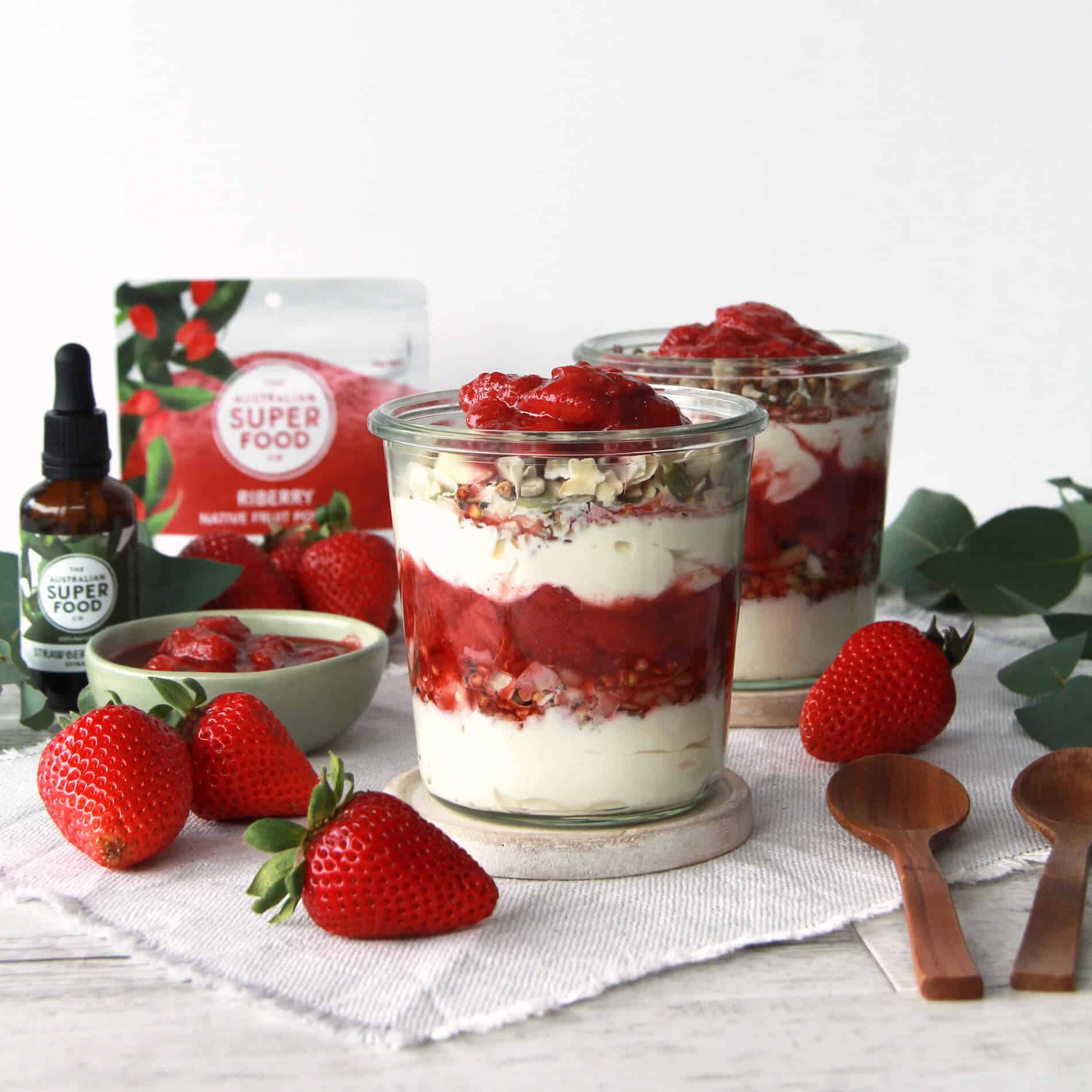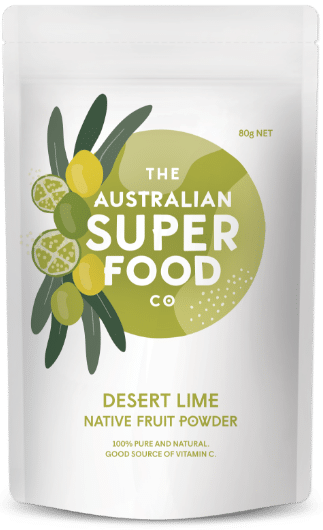Grown in dry, inland parts of the country, the fruit is ripe when the colour changes from green to yellow, although it can be picked when still green.
Desert lime (also known as Citrus glauca) flowers mainly in spring, and the fruit ripens in early summer, when it’s harvested by hand. The trees have adapted to the desert climate, with the lime’s flower-to-fruiting time the shortest of any citrus species in the world, taking only 10 to 12 weeks.
Desert limes were eaten whole by Indigenous Australians and have been used for generations to make cordials, sauces, garnishes, marmalades, pickles and chutneys, and even straight from the trees as a thirst quencher.
Download The Australian Superfood Co provenance map here.
A versatile fruit that is small in size but big on flavour. Desert lime can be used in both sweet and savoury dishes, and wherever conventional lemon and lime would be used.
It’s perfect for use in cakes, biscuits, curd, chocolate and ice cream, and adds a refreshing zing and citrus burst to dressings, marinades, pickles and preserves.
Desert lime has become increasingly popular with chefs in recent years. The ingredient is often featured on culinary and cocktail menus for interest and zest.
Other uses include flavoured drinks such as cordial, syrups and liqueurs.
It makes a delicious flavoured butter, mayonnaise or aioli and is widely used in condiments. Try adding a drizzle of melted desert lime butter over freshly shucked oyster or steamed mussels.
Desert lime adds the perfect zing to traditional laksa and a spicy green or jungle curry. It pairs perfectly with all seafood, and is an ideal finisher dotted through a seafood risotto.
It pairs well with watermelon, honeydew and rockmelon, mango, avocado, leafy greens, chilli, ginger, rice and poultry, and complements cream-based desserts.
Desert lime powder is an ideal ingredient for use in citrus and lemon tart, panna cotta, sorbet, muffins and white chocolate, and adds balance to a spicy nut dukkah.
It adds a delicious citrus burst to cocktails and spirits such as mojitos, margaritas, martinis – almost anything using gin or vodka! It adds a refreshing twist to soda, tonic and mineral waters, and lemonade.
Click here for delicious Desert Lime recipes.
Flavour:
Desert limes have a pleasant, piquant flavour, with intense, yet slightly sweet citrus notes.
Palate:
Pleasant, sharp and mildly sweet citrus taste on the front palate, with refreshing herbaceous notes.
Aroma:
Fresh, citrus aroma with a slightly sweet lemon scent.










